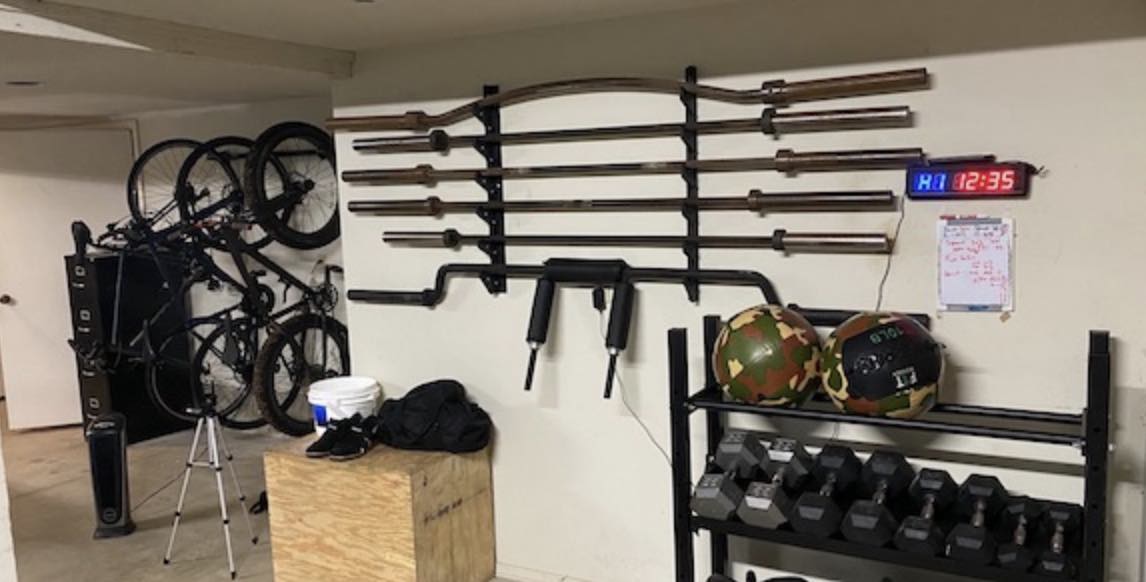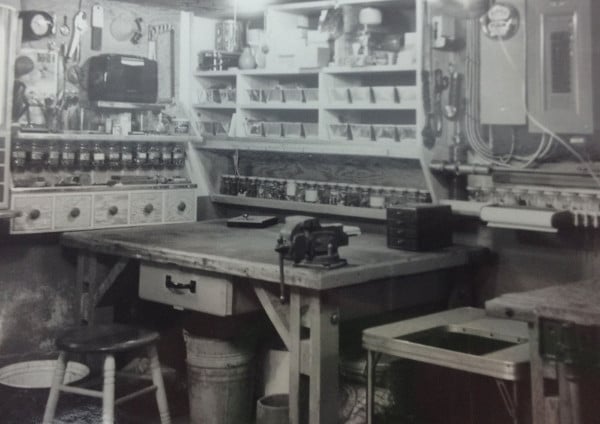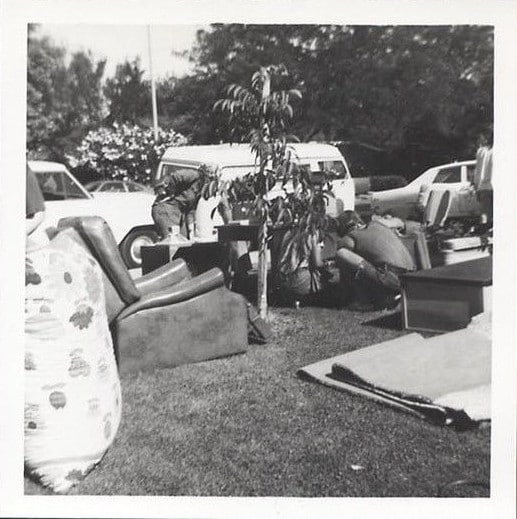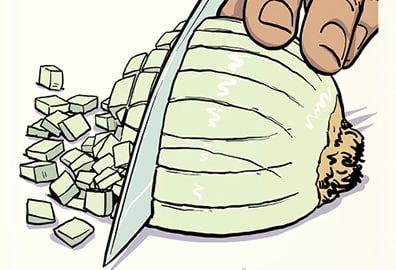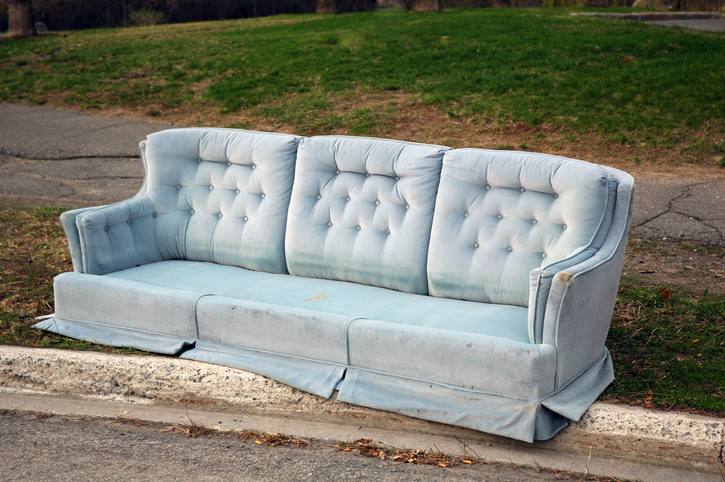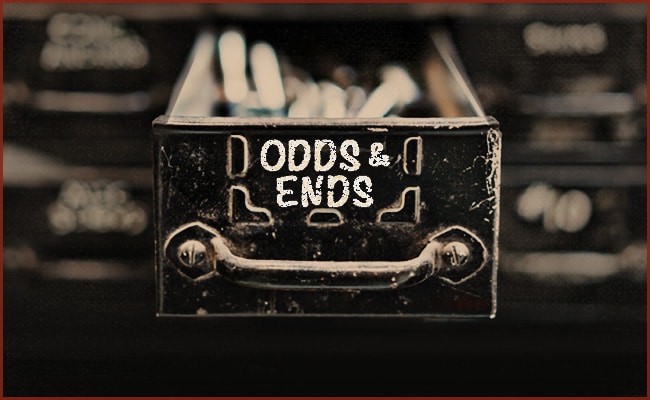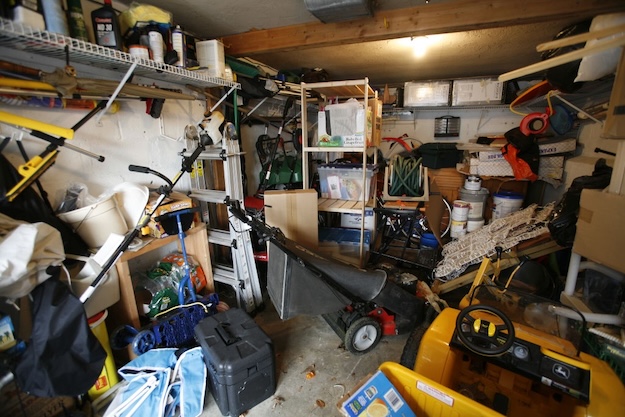
A garage is supposed to be for cars. A workbench. A bike or two. Maybe a garage gym. But most of us end up using it like the junk drawer for the entire house. Big stuff you don’t know what to do with, or you think you might use “someday,” slowly ends up there: unused materials for DIY projects, that cheap futon you used in college (maybe your five-year-old can use it when he’s in college!), toys your now teenage daughter played with when she was four.
I think we hold on to stuff in our garage because we like to think of ourselves as frugal and resourceful and have that fantasy of being the dad who finally finds a use for the weird scrap of wood he’s been holding onto for twenty years. Unfortunately, the fantasy rarely becomes reality. That weird scrap of wood is never going to be used and just takes up space.
Eventually, the stuff in your garage accumulates to the point where you have to do archeological digs just to find the items you actually need. I’ve had that happen to me a few times in the 14 years I’ve lived in my home. The most recent experience of garage clutter realization happened this past spring. I was trying to get ready for a backpacking trip, but had to move around Gus’s little league bats from when he was seven (he’s a high school freshman now who hasn’t played baseball in almost a decade) and a box of short-circuited Christmas lights.
If your garage junk has gotten overwhelming, it’s useful to know the stuff you can and should get rid of — guilt-free. Below we highlight items to discard to free up space and remove potential safety hazards.
As you go about your garage decluttering, keep this overarching guideline in mind: you may have heard the rule that if you haven’t worn an item of clothing in your closet for over a year, you should get rid of it. A similar principle applies here, except since garage items tend towards more occasional use, make this the rule instead: if you haven’t used something in five years, get rid of it. Some exceptions — things you should discard sooner or keep longer — apply, which I’ll mention for certain items.
1. Old Paint
Every garage has a stack of old paint cans. You hold on to them thinking, “Well, I might need to do a touch-up or maybe when I go to repaint, I’ll need to be able to color match.” Those are legitimate uses — as long as your paint isn’t “expired.”
Unopened latex paint can last up to about 10 years if stored properly, though oil-based paints usually don’t hold up quite as long. Once a can’s been opened, you’ve got about two good years, maybe longer if it’s been sealed well. If you haven’t used those paint cans during those timeframes, get rid of them. They’re useless and a fire hazard. If you want to know the paint color you used in your home for future paint jobs, write it down in your butler’s book.
2. Old Fertilizer and Pesticides
Old Miracle-Gro, weed killer, bug bombs. They get unstable with time and temperature swings. If the bag is sun-faded and crunchy, its contents won’t benefit your lawn anymore. Chuck it.
3. Expired Chemicals and Fluids
Motor oil, antifreeze, and half-empty bottles of pool chemicals often sit for years on garage shelves, taking up space and creating fire or poisoning hazards. If you haven’t touched them in years, you’re not going to. Check your city’s hazardous waste disposal program for a safe way to dispose of them.
4. Oily Rags
Rags soaked in drying oils (like linseed oil) can heat up and spontaneously combust if they’re piled together and exposed to airflow. And while rags soaked in motor oil are less combustible, they’re still a safety hazard. And they’re taking up space. Toss them.
5. Broken and Duplicate Tools
If you were going to fix that drill, you would’ve done it by now. The broken leaf blower? Same story. They’re taking up space needlessly. You can get rid of them. Same goes for the duplicate tools you’ve acquired over the years. Do you really need four hammers and three tape measures? Or two socket sets missing the same three sockets? The answer is no.
6. Leftover Building Materials
Unused 2×4s, unused tile, bags of grout. Unless you’re actively repairing the exact project they came from, they’re just taking up space.
7. Random Hardware
Coffee cans of screws and nails, cables to devices you no longer own, random brackets you can’t identify. If you don’t know what it goes to, you won’t miss it. And if you need it again, you can just make a trip to Home Depot. Screws and other thingamabobbers are cheap.
8. Outgrown Sports Gear
The bike your kid hasn’t ridden since Obama’s second term. The youth baseball bats that have stood untouched, leaning in the corner for a decade. It’s time to pass them along to a family with younger kids.
9. Old Gym Equipment
As a garage gym owner, I’ve accumulated several pieces of equipment that served me at one time, but I haven’t used in years. And all that stuff is just taking up precious real estate in your garage. If you haven’t used that specialty bar or squat rack attachment in the last five years, you’re probably not going to use them in the next five years. Sell them. And good news! You now have more space to put new gym equipment.
10. Old Camping Gear
Our family has accumulated plenty of camping gear over the years. Some of it proved to be useful and necessary and some of it not. Do an audit of your gear and keep the stuff you still use on the regular. Chuck the broken tents and the busted lanterns and find a happy home for that sleeping bag you ended up hating.
11. Old Holiday Decor
The inflatable Santa with a hole. The string of broken lights that you told yourself you’d fix back in 2020, but are still in a knot sitting in a box. If you haven’t put it out in years, you won’t. Get rid of it.
12. Old Furniture
Furniture is practically and psychologically hard to discard — it’s big, it’s expensive, and it’s often attached to old memories. So the garage is where furniture goes when you know you should get rid of it, but can’t quite bring yourself to do it. You tell yourself maybe the kids could use it when they’re older. They likely won’t; it will be out of style, or just not their style. And in the meantime, the temperature swings warp the wood, the cushions soak up smells, and all that furniture is just taking up a ton of space. Unless it’s a true heirloom piece (and if it is, keep it inside), furniture in the garage is just bulky clutter. Sell or donate it if it’s decent; have it hauled away if it’s not.
13. Spare Appliances and Electronics
Think about how many “just in case” machines end up in the garage. The beer fridge that barely chills, the microwave from 1995, or the tube TV from your Halo LAN party days in college. Are you really going to bring that 30-year-old microwave back into the kitchen? Of course not. Sell, recycle, or junk that stuff.
14. Tires and Car Parts
Garages were built for cars, so it’s only natural that car parts accumulate there. If you’ve got a stack of bald, cracked, or more than six-years-old tires sitting in your garage, get rid of them. They’re not safe to use, and they take up space. Same goes for car parts left over from vehicles you don’t even own anymore. Tire shops will recycle the rubber; scrap yards will take the old parts. Free up the space.
15. Paper and Pantry Goods
Stacks of old newspapers, bins of files you don’t actually need, bags of dog food. Paper mildews; food attracts critters. The garage isn’t an archive or a pantry.
What to Do With All the Junk
We’ve already noted what to do with many specific items above, but here’s a general guide to help you clear things out efficiently:
For unused stuff that’s in decent shape, sell it. Facebook Marketplace is your friend here. I’ve sold lots of garage clutter there over the years, from old desks to gym equipment.
If you can’t sell your in-good-condition stuff, give it away or donate it.
For everything that doesn’t sell or donate easily — like broken tools and unusable furniture — calling a junk removal service can save you from making a dozen trips to the dump (if you even have a vehicle capable of getting stuff there). For about $150–$200, they’ll haul away as much junk as you can assemble. You can also check your city’s bulk-pickup schedule.
For hazardous materials like paint, fertilizers, oil and gas products, and old electronics, look up your local hazardous waste disposal facility. Many communities host drop-off events for these materials, ensuring they’re handled safely and responsibly.
The Payoff
When you finally clear out your garage of all the unnecessary crap, you’ll feel like you’ve got a new lease on life. Nothing is more satisfying than reclaiming usable space. And it also makes finding the stuff you actually use easier.
And once the junk’s gone, you can start thinking about how to use the space well. We’ve got guides on how to organize your garage and the biggest key to keeping it that way (hint: get your crap off the floor!). Put “Garage Declutter” on your home maintenance checklist every spring, and it’ll never again get to the point where you’ll need to do an archaeological dig to find your workbench.


